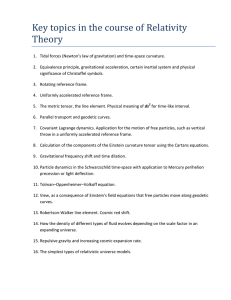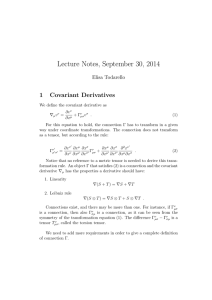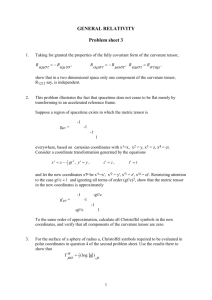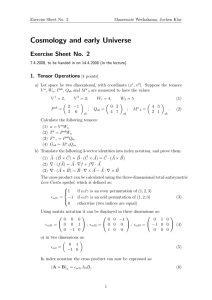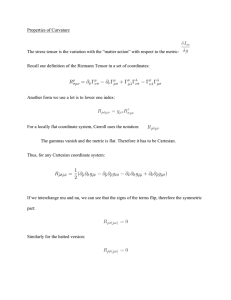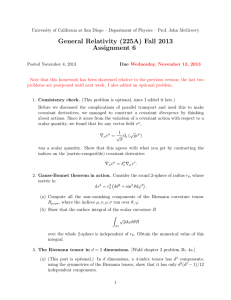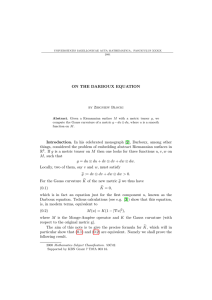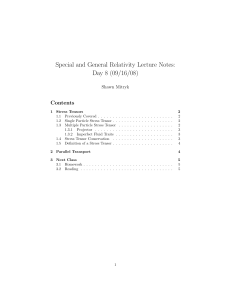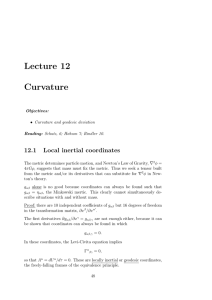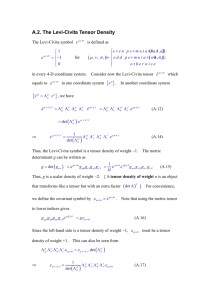Problem sheet
advertisement
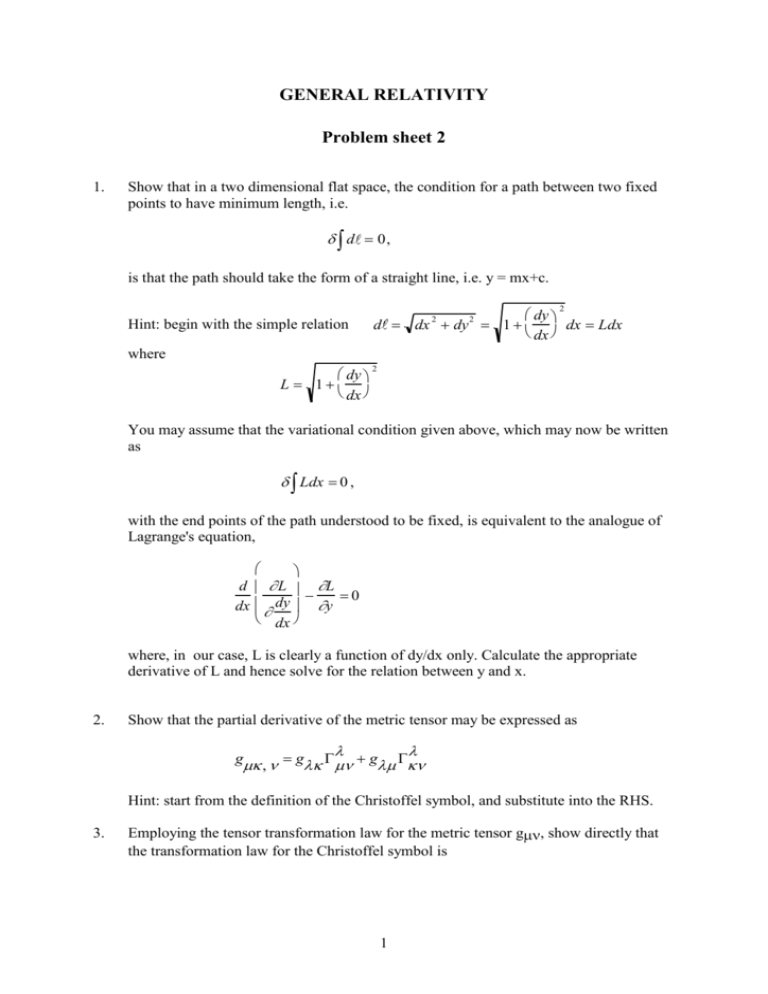
GENERAL RELATIVITY Problem sheet 2 1. Show that in a two dimensional flat space, the condition for a path between two fixed points to have minimum length, i.e. d 0, is that the path should take the form of a straight line, i.e. y = mx+c. dy d dx dy 1 dx Ldx dx 2 Hint: begin with the simple relation 2 2 where dy L 1 dx 2 You may assume that the variational condition given above, which may now be written as Ldx 0 , with the end points of the path understood to be fixed, is equivalent to the analogue of Lagrange's equation, d L L 0 dx dy y dx where, in our case, L is clearly a function of dy/dx only. Calculate the appropriate derivative of L and hence solve for the relation between y and x. 2. Show that the partial derivative of the metric tensor may be expressed as g , g g Hint: start from the definition of the Christoffel symbol, and substitute into the RHS. 3. Employing the tensor transformation law for the metric tensor g, show directly that the transformation law for the Christoffel symbol is 1 x x x x 2 x x x x x x x 4. The surface of a sphere of radius a is characterised by the metric d 2 a2d 2 a2 sin 2 d 2 where and are spherical polar coordinates. Taking x 1 , x 2 , evaluate all Christoffel symbols in this coordinate system. 5. For the surface of a sphere of radius a, Christoffel symbols required to be evaluated in polar coordinates in question 4 of the second problem sheet. Use the results there to show that 12 (log g ) , where g is the determinant of the matrix g. Evaluate also the components of the curvature tensor and show that the curvature scalar R = -2/a2. 6. Taking for granted the properties of the fully covariant form of the curvature tensor, R R , R R , R R , show that in a two dimensional space only one component of the curvature tensor, R1212 say, is independent. 7. For the surface of a sphere of radius a, Christoffel symbols required to be evaluated in polar coordinates in question 4 of the second problem sheet. Use the results there to show that 12 (log g ) , where g is the determinant of the matrix g. Evaluate also the components of the curvature tensor and show that the curvature scalar equals -2/a2. 8. Contracting indices of the 1st and 2nd Bianchi identities to prove that the Einstein's tensor is symmetric and divergence free. 2
